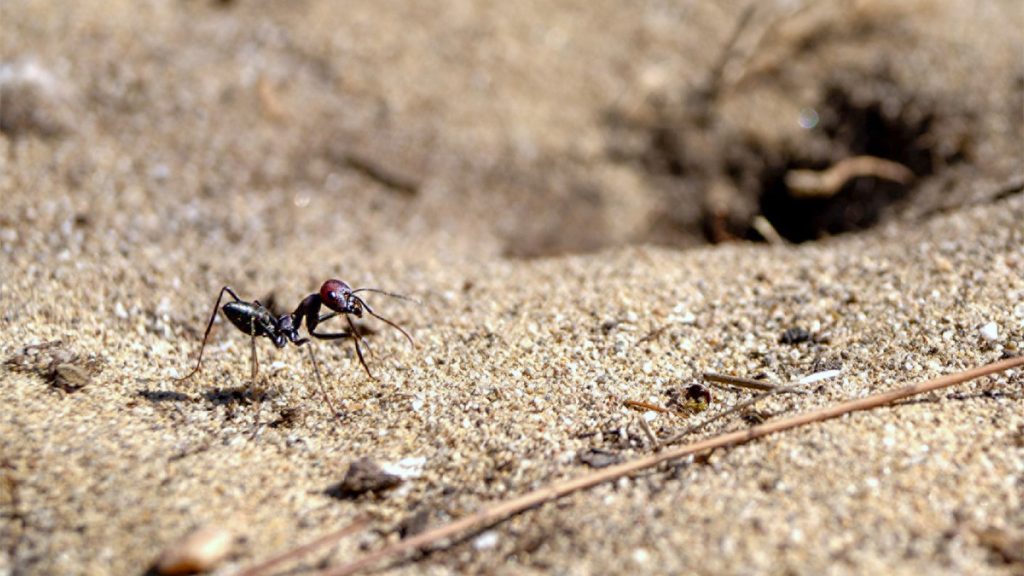Some species, including birds, fish, turtles, moths, and butterflies, use Earth’s magnetic field for navigation. In 2018, desert ants were added to that list. Young desert ants use magnetic cues as a reference while learning to orient themselves using landmarks and the sun to find their way back to the nest. Past research on where in the brain magnetic cues are processed has been challenging, but a recent study on desert ants sheds some light on this topic.
Scientists set up experiments with one species of desert ant in Greece and created disruptions in the magnetic field near the nest entrance. When the magnetic field was altered, young ants had difficulty orienting themselves back to the nest during their learning walks. The study involved marking ants with colored dots to differentiate between experienced foragers and young ones. The researchers found that ants exposed to altered magnetic fields had smaller mushroom bodies in their brains, which are structures involved in learning and orientation, compared to ants in a normal magnetic field environment.
The changes observed in the ants’ mushroom bodies suggest a direct association between learning behaviors and anatomical changes in the brain. When the magnetic field was disrupted, the ants were not able to learn, and the brain changes observed in ants in a normal magnetic environment were not present. However, when the researchers completely eliminated the magnetic field around the nest entrance, the ants were still able to orient themselves correctly, suggesting that ants can prioritize navigational cues based on available information.
The study raises questions about how magnetic signals impact ants throughout their lifespan and in different environments. For organisms living in deserts like the Sahara, where landmarks can change overnight due to sandstorms, magnetic signals may play a crucial role in navigation. Understanding how ants and other animals process magnetic cues in the brain can provide valuable insights into how these signals influence behavior and brain development. Future research could further explore the effects of magnetic fields on animals in various environments and life stages.


